15 French Revolution Sites in Paris to Visit
Between 1787 and 1799, France passed through a period that would completely change the country’s future, an event that became known as the French Revolution, in which the main stage was Paris.
Even though it took place more than 200 years ago, many French Revolution sites are still present nowadays to tell us the stories of this bloody yet important period of France.
In this French Revolution tour in Paris, I will walk you through the most important places in the French Revolution, from the Place de la Bastille, where the revolution started, to the Place de la Concorde, where the last King and Queen of France lost their heads, alongside so many others.

Disclosure: This post does contain affiliate links that I earn a small commission for at no extra cost to you. Any purchases you make through my links help keep the site running. Thanks in advance for your support!
French Revolution Overview
The French Revolution, which began in 1789, was a monumental period of upheaval and change that dramatically reshaped Paris and the entire nation.
It all started with the financial crisis in France, largely due to the country’s involvement in costly wars and extravagant spending by the monarchy.
The situation reached a breaking point when King Louis XVI convened the Estates-General in May 1789 to address the financial issues.
However, this assembly quickly spiraled into a broader conflict over political representation.
The Third Estate, representing the common people, broke away to form the National Assembly, signaling the start of a revolution.
As tensions escalated, Paris became the epicenter of revolutionary fervor.
The storming of the Bastille on July 14, 1789, is perhaps the most iconic event of the revolution, symbolizing the people’s defiance against the monarchy’s oppression.
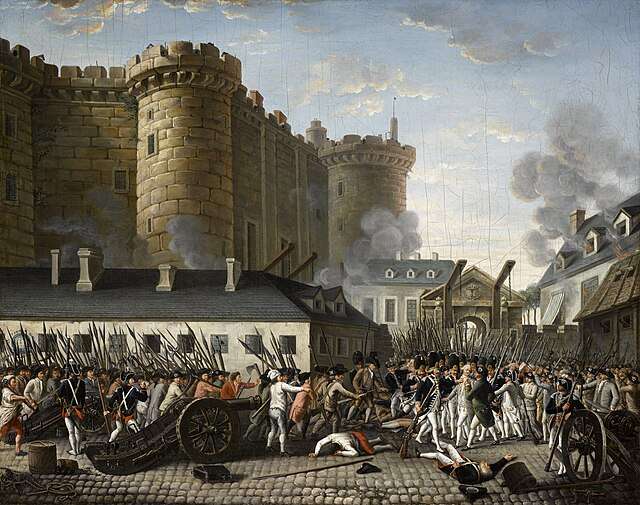
In the following years, the revolution saw the rise of radical groups like the Jacobins, who pushed for more extreme measures, including the eventual execution of King Louis XVI and Queen Marie Antoinette.
The revolutionaries aimed to dismantle the old feudal structures and establish a republic based on the principles of liberty, equality, and fraternity.
However, the revolution was marked by intense violence, particularly during the Reign of Terror in 1793-1794, when thousands were executed by guillotine under the leadership of figures like Maximilien Robespierre.
Despite the chaos, the revolution brought significant social and political changes, including the abolition of the monarchy and the rise of Napoleon Bonaparte, who would later declare himself Emperor.
The French Revolution left an indelible mark on Paris, transforming it from a city of royal splendor to the heart of revolutionary change, setting the stage for modern France.
Map of the French Revolution Sites in Paris
French Revolution Sites in Paris

Palais Royal
This beautiful building which now appears in so many Instagram posts was built in 1633 by Cardinal Richelieu and was known as the Palace-Cardinal for obvious reasons until the Cardinal died in 1642.
The palace then became a royal property and received the name Palais Royal, being home to some members of the French Royal Family.
Although few people associate this beautiful building with the revolution, this should be considered one of the most important French Revolution locations, as it was here that the idea of going against the actual regime started.
On July 12, the eve of the revolution, the Palis Royal’s gardens served as the stage for Camille Desmoulins, a journalist, and politician of the time, who climbed onto a table of the Cafe du Foy, one of the many cafés in Palais Royal garden, and announced the dismissal of Jacques Necker, a French statesman by King Louis XVI finishing his announcement by calling people “To arms!“, apparently losing his mind out of excitement.
This is considered the beginning of the Revolution, as his speech was enough to mobilize the population who two days after invaded the Hotel des Invalides to loot its weapons and storm the Bastille.

Hôtel des Invalides
Built as a hospital for wounded soldiers, by Louis XIV, it is known nowadays as the War Museum.
Hôtel des Invalides is now a complex of three museums displaying items related to wars as well as tombs of important figures mostly from the military scenario.
One of the most important pieces of the museum is the tomb of Napoleon.
The Hôtel des Invalides was stormed by several thousand men on the morning of 14 July.
Two days after the speech of Desmoulins in Palais Royal, the crowd plundered the weapons in the site before heading to the Bastille.
Best Guided Tours of the Hôtel des Invalides:

Place de la Bastille
The Place de la Bastille has its name because it was here that the infamous Bastille prison fortress once stood, until the “Storming of the Bastille” event.
Where a confrontation between civilians and the old Regime took place on the afternoon of 14 July 1789.
The Bastille was destroyed during the French Revolution and little has remained of the old Bastille building.
In 1899 a small section of the wall was uncovered on platform Number Five of the Bastille metro station, which can still be seen today.
The Storming of the Bastille officially marks the start of the French Revolution, and even though it only contained seven inmates at the time of the storming, it was a symbol of abuse by the monarchy.
In its place now, stands the July Column that commemorates the July Revolution of 1830 (the second French Revolution.
👉Did you know? During the excavation of the metro, part of the Liberté Tower was found. The tower was dismantled and later reconstructed in a nearby garden southwest of the Place de la Bastille. It is also possible to see on the ground of Place de la Bastille some outlines of the fortress.

Notre Dame
After the monarchy was suspended in a move that some consider a second Revolution, King Louis XVI and Queen Marie Antoinette were arrested, and the French Republic was declared.
This was not a good period for the Church, with the implementation of the Enlightenment ideals and the dechristianization of the French population, churches across the city became the main target.
Notre Dame, for example, suffered sacking, and pillaging, and had its treasures destroyed, until it was officially turned into the “Temple of Reason”, a place for the practice of the “Cult of Reason”, a state-sponsored atheistic religion created by radicals such as Jacques Hébert and Antoine-François Momoro as an opposition to the Roman Catholicism.

Panthéon
The word Pantheon means “Every God”, and was normally used by pagan people to name their houses of worship.
However, the Pathéon of Paris was originally built to be a church called the “Eglise Sainte-Geneviève”.
It was only finished shortly before the start of the French Revolution in 1789 and turned into the “temple of the nation and mausoleum for the great men of the Nation” in 1791 by the revolutionary government.
Important figures were buried here including Voltaire, Rousseau, and the revolutionaries that played a big role in the French Revolution, Jean-Paul Marat.

Terra Libera/Flickr
Versailles Palace
The Versailles Palace is one the most famous French Revolution buildings as it is directly linked to the French Royal Family, and represents well everything the French people were fighting against.
Completed in 1751, Versailles was first built to be the hunting lodge of France’s King Louis XIII.
It was then transformed into the sumptuous residence we see today, by his son and successor, Louis XIV.
The apartments of the King and Queen, as well as the famous Hall of Mirrors, were built and the palace became the official residence of the French royal family in 1682, when King Louis XIV moved to the palace, until the French Revolution.
It was here that King Louis XVI and Queen Marie Antoinette used to live until 1789 when they were stripped of power and brought to the Tuileries Palace, in Paris, and ultimately beheaded.
In the 19th Century, the Versailles Palace was turned into the Museum of the History of France by King Louis-Philippe.
Versailles can easily be visited on a day tour from Paris.
Do reserve at least half a day to visit the main areas of the palace, including the gardens, the apartments of the King and queen, and the Hall of Mirrors.
You can buy the tickets online to save you time, as some days, especially during summer and sunny days, the palace gets a bit crowded.
You can get there by train or take a tour with a minibus leaving from Paris.
Best Guided Tours of the Versailles Palace:
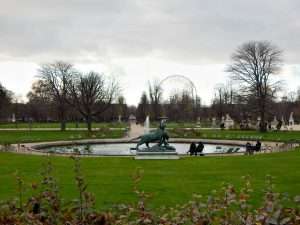
Jardin des Tuileries
Tuileries Garden is what is left of the old Tuileries Palace, the palace was burned and destroyed in 1871 by the Paris Commune.
However, in 1789, during the French Revolution, it was here that the royal family was brought from Versailles and held under surveillance until they were transferred to the Temple and later publically killed.
Nowadays the Jardin des Tuileries is the charming garden in front of the Louvre Museum.

Palais du Luxembourg
During the Revolution, the Luxembourg Palace was transformed into a prison.
Major figures of the Revolution were detained here, like Danton and Camille Desmoulins (the instigator of the French Revolution) in March 1794.

Le Procope Cafe
Opened in 1686, this is considered the oldest Café in the world. Le Procope Cafe still preserves its interior authenticity.
During the years the cafe received many remarkable guests, like Napoleon, Voltaire, Rousseau, and Benjamin Franklin.
The cafe keeps some interesting items like Napoleon’s hat and the last letter from Marie Antoinette to Louis XV.
It is believed that this was the place where Marie Antoinette’s death warrant was signed.

Conciergerie
The building was part of a complex called Palais de Justice, originally a royal palace and the home of governors of Ancient Rome.
It was the official residence of the French monarchy until Charles V moved the royal palaces to Marais in 1358 following the Jacquerie revolt.
It was later turned into a prison during the French Revolution. More than 2.600 prisoners were tried here, including Marie Antoinette, who was brought here from the Temple on August 1st, 1793, and separated from her children.
Danton was also held here.
Nowadays it is a museum, the cell where Marie Antoinette was held was reconstructed and you can have a feeling of what it was like when she was there.

Place de la Concorde
Originally called Place Louis XV, it was renamed “Place de la Révolution” during the French Revolution and later called “Concorde” to symbolize the reconciliation after the Revolution.
Before the revolution, the Place Louis XV used to hold a statue in honor of the monarchy, but it was taken down during the revolution and replaced with the guillotine.
During the French Revolution, many guillotines were placed across the city, but the guillotine of the Place de la Revolution was the most famous one, and the site became the focus of the executions during the Reign of Terror.
👉Did you know? Over 1,300 people were executed in the Place de la Revolution, including famous figures of the French Revolution were executed including King Louis XVI and his wife, Queen Marie Antoinette, and important revolutionary figures such as Danton and Robespierre.
Today, in the center of the square, you can find a board on the floor marking the exact location of the guillotine and a list with the names of its victims.

Catacombs of Paris
Created as a way to solve the issue of the overpopulation of Parisian cemeteries and the closure of the Cemetery of Innocent.
Around six million human skeletons are kept in the Catacombs including many skeletons of those who died in the several riots during the French Revolution.
Best Guided Tours of the Hôtel des Invalides:

Basilica St Denis
The basilica bears its name in honor of France’s patron saint, St Denis, and the site where the basilica was built is believed to be the site where the Saint was buried after his death in around 275 AD.
The last home of the royal family. The abbey is known as the royal necropolis as it keeps the remains of many monarchs.
During the French Revolution though, many bodies were removed by protesters to celebrate the Revolution.
Louis XVI and Maria Antoinette were initially buried in the churchyard of the Madeleine, but the few remains of the king and queen were found and brought to St-Denis in 1815.

Hotel de Ville
A building that houses the city’s local administration. Back in the time of the French Revolution, it used to be the headquarters of the Paris Commune, where Robespierre and his supporters used to gather.
It was here that Robespierre was arrested, after years of the Reign of Terror.
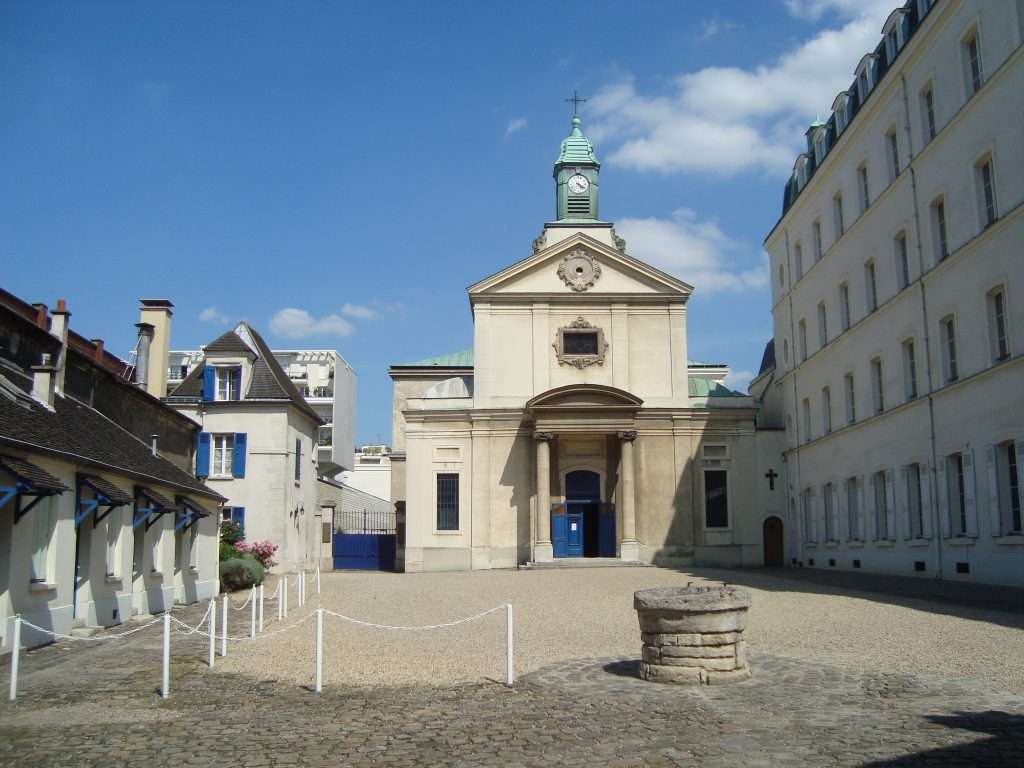
Cimetiere de Picpus
The Cimetière de Picpus is a cemetery located in the 12th arrondissement of Paris, France.
It is notable for containing the graves of many victims of the Reign of Terror, particularly those who were executed by guillotine during the period of the Revolution.
Among the approximately 1,300 people buried there are aristocrats, clergy, and commoners who were killed during the tumultuous years of the Revolution.
One of the most famous individuals buried in the Cimetière de Picpus is the Marquis de Lafayette’s wife, Adrienne de Lafayette.

Paris has more than 130 museums, but if you want to know more about the French Revolution, this is the place, the Musée Carnavalet is dedicated to the history of Paris and its inhabitants
It is also known as the Museum of the French Revolution, due to its amount of artworks, documents, and artifacts from the French Revolution.
I really recommend knowing a bit about the French Revolution before visiting this museum, and that’s why I have added it as the last item on the list, as without knowing about history, you will feel kind of lost.
Otherwise, this is the perfect place to end your French Revolution in Paris tour.
Among the amazing pieces related to the French Revolution inside the Carnavalet Museum include paintings and portraits as well as belongings of Marie Antoinette and the paper on which Robespierre partially wrote his signature when he was seized by soldiers.
The museum has no entry fee, however, it is also not perfectly managed.
The logistics of the museum are a bit hard to understand, items are not organized in a clear chronological order, plus there is no information in English.
However, if you do love history, don’t miss the opportunity to visit the Carnavalet Museum.
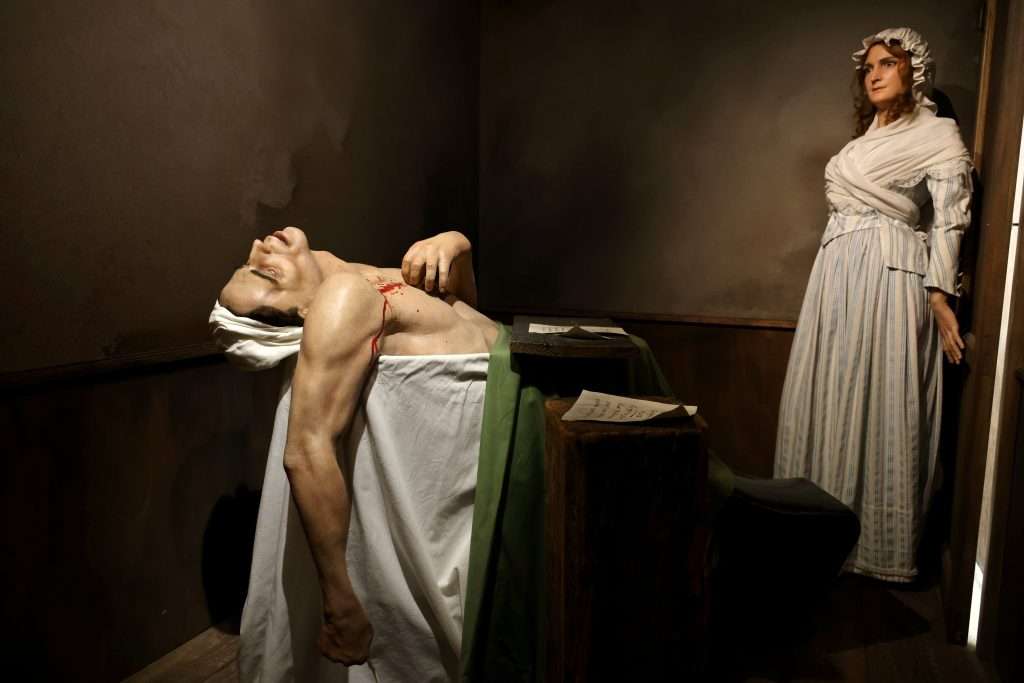
Musée Grévin
The Musée Grévin is a wax museum known for its lifelike wax figures of famous individuals from various periods in history.
It was founded in 1882 by caricaturist Alfred Grévin and has since become a popular tourist attraction.
It features wax figures of key figures from French history, including some who played significant roles during the Revolution.
The most famous of them is Jean-Paul Marat’s death scene. Marat was a radical journalist and politician and was assassinated in his bathtub by Charlotte Corday in 1793.
FAQ’s
How long did the French Revolution last?
The French Revolution lasted for approximately 10 years, from 1789 to 1799.
It began on May 5, 1789, with the meeting of the Estates-General, a general assembly representing the three estates (clergy, nobility, and commoners) of the French realm.
The revolution’s end is often marked by the rise of Napoleon Bonaparte, who staged a coup on November 9, 1799 (18th Brumaire in the French Revolutionary calendar), effectively ending the revolution and beginning his rule as First Consul, which later led to his declaration as Emperor of the French in 1804.
What were the most important causes of the French Revolution?
The causes of the French Revolution were many, the dissatisfaction of the population, especially the bourgeoisie, part of the Third Estate (Clergy, Aristocracy, and Commoners), whose influence was rising towards the Estate and were aspiring for political equality.
The influences of the newly developed Enlightenment philosophy called for a society based on reason instead of traditions and desacralized the authority of the monarchy and the Catholic Church.
All this scenario was fed by a huge financial debt France was facing at the time, due to its involvement with the American Revolutionary War, leaving France severely in debt, added to the absurd amount of money spent by the royal family on superfluous things, like expensive dresses, jewelry, and extravagant parties.
Who were the aristocrats who died in the French Revolution?
Some of the most notable aristocrats who died during this tumultuous period were King Louis XVI and his wife, Queen Marie Antoinette, the younger sister of Louis XVI, Princess Élisabeth of France, Madame du Barry, Louis Philippe II, Duke of Orléans, and Marquis de Condorcet.
Besides them, other important figures killed during the French Revolution include Robespierre and Danton.
MORE ABOUT THE FRENCH REVOLUTION
France Travel Essentials
- FLIGHT TICKET: Get the best flight deal with Skyscanner.
- ACCOMMODATION: Find the perfect accommodation on Booking.
- VISA: Apply for a Visa on iVisa.
- eSIM: Stay connected throughout your trip with Airalo eSim. It offers packages from 7 to 30 days for accessible prices.
- PRIVATE TRANSFER: Book your private airport transfer.
- RENT A CAR: Find the best rates on DiscoverCars.
- GUIDED TOUR: Find the best tours in Italy on GetYourGuide
This text was originally written and posted in August 2017 and updated in March 2024. New information has been added and links have been updated so that it could offer a better experience to the reader.
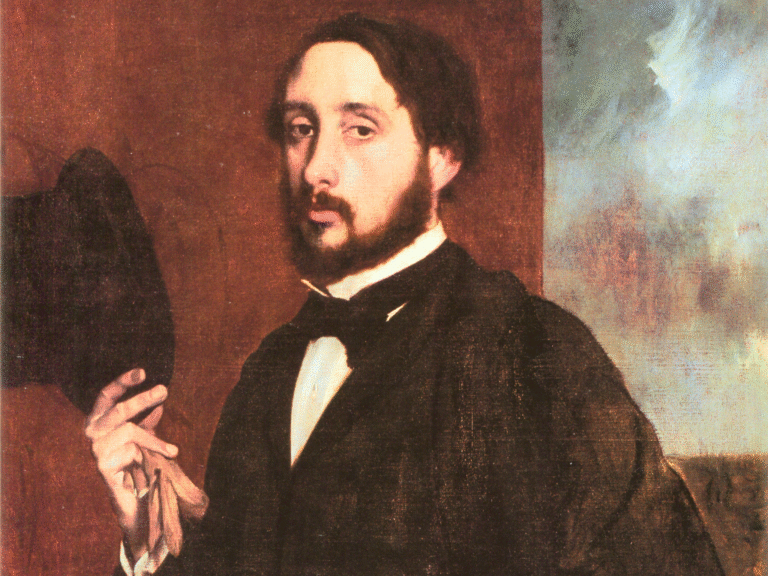





Oh I’ve thoroughly enjoyed this post! I love this unique perspective on Paris and the history behind all these places! Sometimes these very spots get so touristy, I feel the history gets lost, so thank you for putting this post together!
will be visiting Paris next year on the way to Iceland. The post gave me goosebumps. This is the land the birthplace of democracy and to think of spending time at the feet of those marvellous monuments makes me high! Beautiful and informative post. Thanks for the share.
Definitely! JIt is insane to think about all the history those monuments and buildings have behind them! I hope you enjoy your staying in the city as much as I did!
I love Paris and got to visit some of these when I was there last year. Will definitely be returning to visit more.
I’ve never been to Paris, but dying to go! I am completely obsessed with learning about history, and I just know I will love it! Your photos are amazing by the way!
Thank you so much April! You really should plan a visit to Paris, I’m sure you will love it, it is impossible not to hahahah
Paris is not only roamantic but has such an amazing history! I got engaged in Paris 🙂
http://www.chausadventure.wordpress.com
How cute! This is so romantic! Definitely, Paris has history in every corner 😀
Basilica St Denis is awesome! Thanks for this! I love history related articles. Hoping to visit Notre Dame some day 🙂
Very informative and nicely collated!
wow I loved the history behind the places. I loved your style
Thank you! 😀
Great post! I’ve been to a few of those places but didn’t know all the history, now I do!
http://www.coastapus.com
Awesome post! I’m going to Paris with my boyfriend in September and definitely want to see some of the things on this list 🙂
I’ve been in Paris and I’ve never seen such mysterious place 🙂
Wow! I’ve always been amazed ny Paris and this has just validated my opinions about how marvelous that city is! I hope I could visit someday
I really enjoyed reading this post ! I’m a huge history buff so this is definitely something that caught my interest. I can’t wait to add some of these to my list to visit !
Wow I had no idea about all these places! I’ve been to a few but next time I go, I want to visit the cafe!!! Thanks for your interesting post!
When I think about Paris, my thoughts go immediately to food! This post is a great insider into the French revolution. Would love to go back for a visit knowing all these facts!